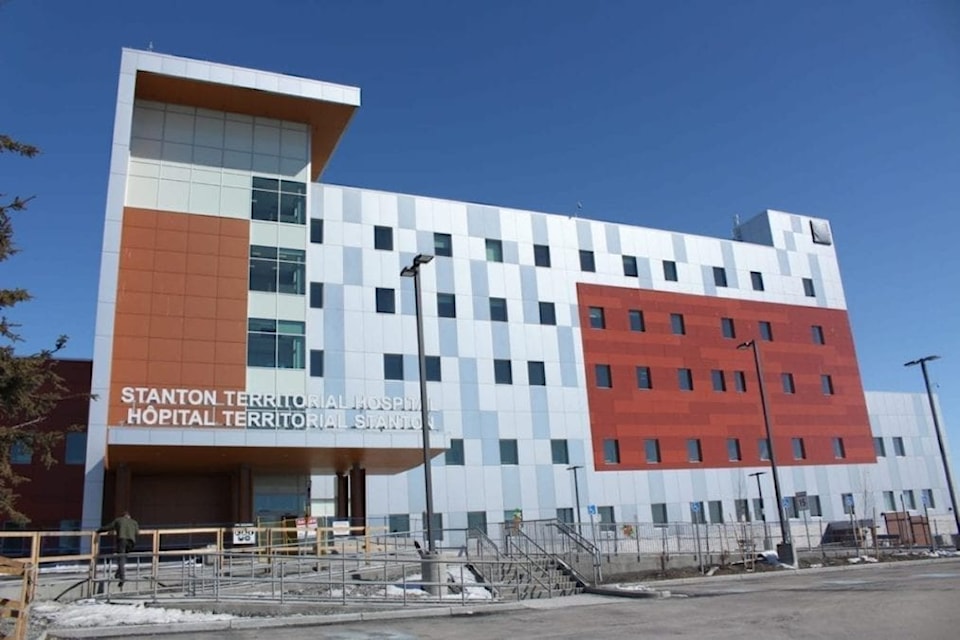Many Northerners are concerned about coronavirus spreading to the territory even though the territorial government has said the risk of spread is low.
Of particular concern is the capacity of the territory's largest hospital, Stanton Territorial Hospital in Yellowknife, to handle a large number of patients in case the virus reaches the NWT.

"Honestly, if you have the flu (or an aurora tourist from China has flu-like symptoms) are they going to stand around Stanton emergency, our one hospital – where triage would not have patients seen for hours, coughing and spreading germs, and not a comfortable place to rest?" asked one reader on Facebook – one of dozens of commentators on a story published in the Jan. 24 Yellowknifer where the health department stated the risk to the territory from the coronavirus is "low."
"No one will be seen. Public health needs to open as clinic for this purpose."
"With direct flights from Asia to Vancouver and Vancouver to Yellowknife ... hmmmmm. I'm thinking there is a good chance (the virus will spread)," wrote another reader.
News/North spoke with the NWT's chief public health officer Kami Kandola about Stanton's capacity to deal with a surge of patients if there is a large scale outbreak.
While Kandola didn't directly address the issue of capacity, she said that in case of a rapidly spreading virus, not all sickened people would be sent to hospital at once.
"If there are confirmed cases we don't want to send everyone to the hospital. We can do phone triages and assess how sick people are. People with mild cases can stay home. Some could go to the clinic. The people who are very sick can go to the ER. We don't want to exhaust the ER staff."
As of press time, there has been one confirmed case of coronavirus in Canada - in Ontario - and one presumptive case. Another 19 people in that province are being investigated for possible infection.
The government has warned Canadians to avoid non-essential travel to China's central province of Hubei and its capital Wuhan, where it is believed coronavirus originated in a seafood market.
"Right now we're in the planning stage and raising public awareness. We wouldn't go from no cases on Monday to having 500 cases a week later," Kandola said.
In 'planning phase'
But if the virus did reach the NWT, Kandola said the first step would be to inform the public and the territory's front line providers are already receiving training in how to do triage.
"If people have a travel history to Wuhan and have a fever and cough, are symptomatic and present themselves to the emergency room, the recommendation is they be given a mask, be tested for coronavirus and they would be isolated in a negative pressure room. That information was given to front line providers."
The plan to deal with coronavirus is the same as the plan that was used with the H1N1 influenza pandemic of 2009, Kandola explained.
"But the difference is that H1N1 was influenza. A vaccine was developed. Coronavirus is a separate family. There is no vaccine so we need to do supportive care. Right now there are no cases (in the territory) but to limit public spread we're telling the public to take precautions. You don't want to wait for coronavirus to come here."
Respiratory infections such as influenza, whooping cough and the common cold are circulating in the NWT. Since their symptoms can mimic those of coronavirus, Kandola advises the public to take the same health measures they would with those other illnesses, such as avoiding personal contact with people who are sick, washing hands often, avoid touching one's face or eyes, and disinfect any surfaces one has coughed or sneezed on.
Coronavirus concerns have also centred on the risks associated with mainland Chinese tourists coming to the territory.
Travellers from China represented the largest non-Canadian visitor group since 2017, with almost 19,000 coming through Yellowknife airport in 2017-2018 and 19,446 coming in 2018-2019, according to a tourism research report published by the NWT government last November.
Tourism operator Yellowknife Vacations, which serves a large number of customers from mainland China, is following news and health updates online for precautions on coronavirus.
"(We're) avoiding handshakes for now and using alcoholic hand sanitizers. And we're constantly keeping an eye on updates but there are no vaccines available yet for it," said company co-director Amit Tripathi.
The operator focuses on aurora tourism and outdoor activities and Tripathi said about half of his customers are Chinese.
"The majority of our Chinese customers come from the mainland," he said, adding that none of his recent customers have been from Wuhan.
News/North contacted other tourism companies that host tourists from China and who employ Mandarin-speaking guides but didn't receive responses by press time.
More than 800 people – mostly in Wuhan - have been infected with coronavirus and at least 41 have died. Chinese authorities have introduced restrictions to curb the spread of the virus, including the suspension of all public transportation in Wuhan.
A small number of cases have been reported in Singapore, Vietnam, Thailand, Nepal, South Korea, Japan, the United States and France.
All cases were associated with people who came from Wuhan or who had travelled there recently.
The World Health Organization has said it too early to declare the outbreak a global health emergency.
